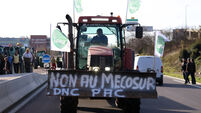Drug baron on trial in US
Gilberto Rodriguez Orejuela, aged 65, landed before dawn on Saturday in a US government plane and was driven to a downtown Miami jail.
Rodriguez Orejuela is charged, along with his brother, Miguel, with running a drug network responsible for producing 80% of the US cocaine supply in the 1990s. The brothers have been jailed in Colombia for nearly a decade.














